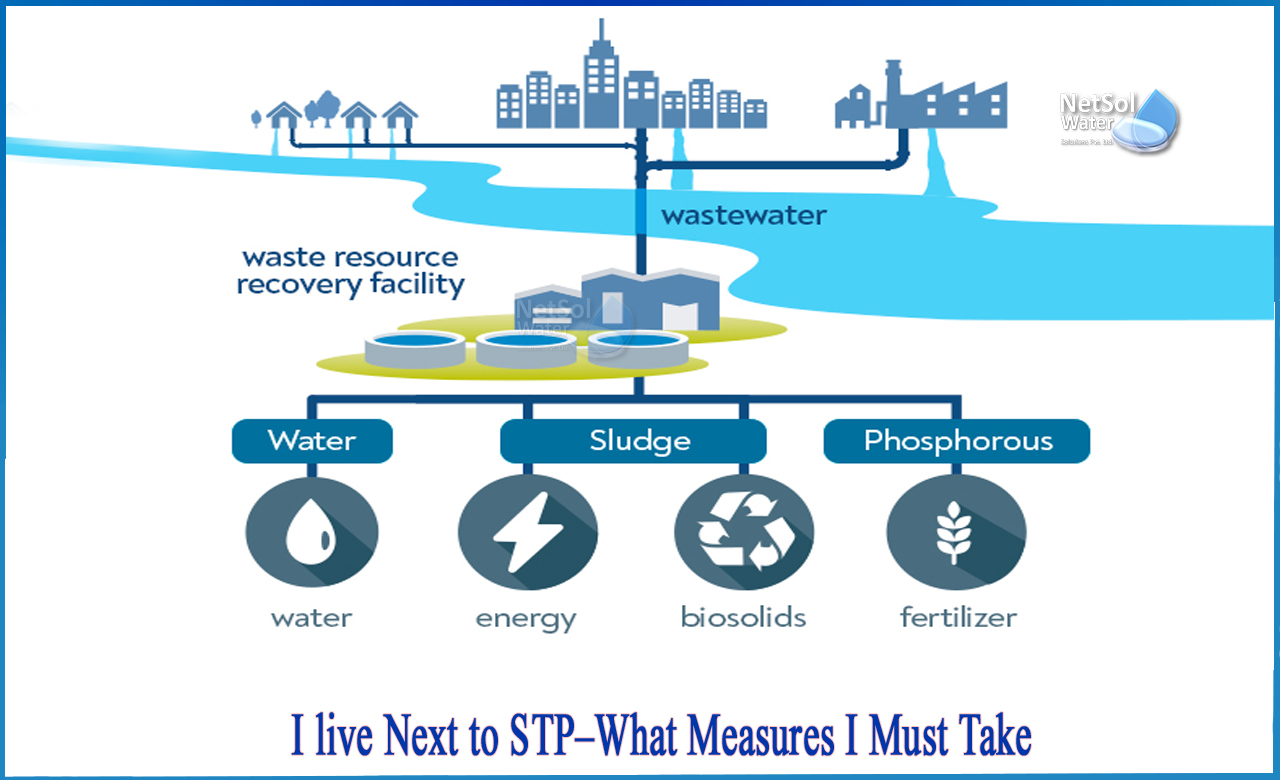Guidelines for the location of sewage treatment plants:
1. The STP location should be at least 250 metres away from any lake or pond, ideally on the downstream side so that sewage does not enter the water bodies.
2. The STP location must be at least 250 metres away from a river or stream, and the treated or untreated sewage must not reach the above-mentioned water sources.
3. The STP location should be at least 500 metres away from public amenities including parks, temples, and educational institutions.
4. The STP should be built on dry land, and the treated sewage should be used to irrigate the area.
5.The STP site shall be at least 500 metres away from a recognised habituated area, and a no-construction zone of 100 metres around the STP site boundary should be declared so that green belt development can take place in that region.
6. The local body must also guarantee that land is available and that land owners consent to the dumping of treated sewage, which should be indicated at the time of the NOC application.
7. When deciding on a site in terms of land size, the local government must take into account treatment technology.
What is Sewage Treatment Plant?
Sewage treatment facilities filter and treat wastewater/sewage, converting it to a cleaner effluent that can be returned to nature in a safer, more environmentally friendly state. They aid in the restoration of groundwater balance, the prevention of diseases, and the reduction of environmental degradation and pollution. The purified water in housing societies can be utilised for non-potable applications like gardening, car washing, building, irrigation, and toilet flushing.
Cleaner water would reduce the number of deaths caused by water-borne diseases, have a lower environmental impact from pollution, and, on a much smaller scale, no house would have to pay for water tankers because there would be an abundance of groundwater on macro scales and reusable water at community levels.
Despite the fact that these STPs are incredibly essential, some people will refuse to buy a home near one because they are concerned that it would release bad odours or make a lot of noise. However, if these sewage treatment plants are properly installed and maintained, you should not be adversely affected.Due to its working circumstances, a wastewater treatment plant (WTP) is regarded a major source of aerosols and may pose a significant health risk to plant workers as well as the surrounding community.
From all types of aerobic and anaerobic WTPs, various bacterial and fungal populations have been identified. Temperature, wind velocity, pollution, and specific humidity are all elements that influence the distribution of aerosols and the capacity of microbes to live in the air. Microbes are dehydrated at very low humidity and high temperatures, whereas high humidity may protect cells from solar exposure. UV light, oxygen content, particular ions, various contaminants, and air-related factors have all been linked to a decrease in biological activity in a wastewater treatment plant.
Do They Have a Bad Smell?
Surprisingly, sewage pumping facilities do not have the stench that many people believe. They are created with the people who live nearby in mind, but if they aren't maintained properly, problems such as a blockage or a build-up of oils and grease can occur, resulting in foul odours. The homeowner and the water company share responsibilities for keeping the drains clean and well-maintained. So, if you notice a terrible odour at your home, call them right away and they'll come out to inspect and remedy the problem as soon as feasible.
Do They Make a Lot of Noise?
Pumping stations can be noisy, although rules are in place to keep this to a minimum while they are being built. There are restrictions on how close a pumping station can be built to any inhabited structures, in order to keep noise and irritation to a minimum for nearby residents.
In regions like this, authorities should adopt punitive preventive steps to protect residents' health in order to reduce the impact on public health. A tree growing around the STP, as well as the STP's proper function with, are examples of such methods.
For more information, contact Netsol Water.




